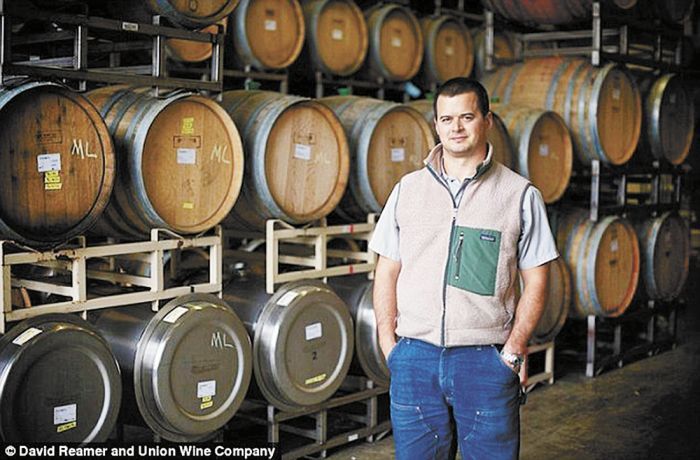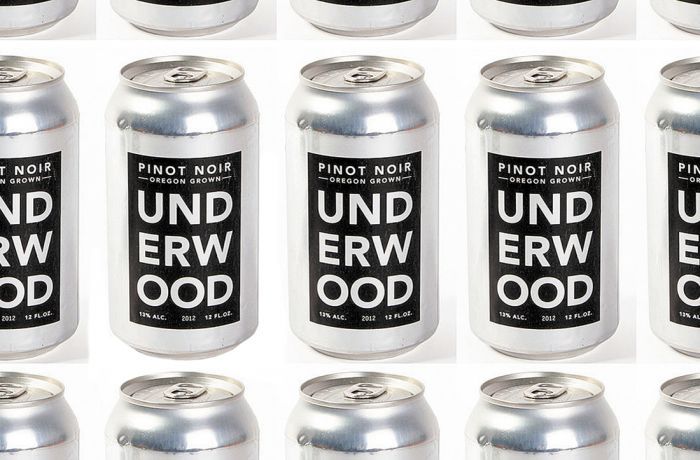Can-Do Attitude


By Karl Klooster
Union Wine Company turned many heads last November when owner Ryan Harms announced the rapidly evolving local winery would begin offering wine in a can in 2014. The news was less of a surprise to industry insiders, as Union Wine has proceeded down a distinctly proletarian path ever since its founding three years ago in Tualatin.
“Our philosophy is to make great craft wine without all the muss and fuss,” Harms said.
“Craft brewing has returned American beer to its roots,” he continued. “It has refocused the center of interest on character, even if it comes at a somewhat higher cost, and away from the bland, low-priced beers that dominated the domestic market for decades.”
The comparison with craft beer suggests a stratagem was brewing in Harms’ mind — or should that be fermenting? — from the outset.
Thanks to the craft brewing movement, once banal American brews have gained equal stature with the best of their European brethren. Yet they remain within reach of the average Joe, yearning to quaff a better bitter.
Why can’t that also hold true for Oregon wine?
The average price has escalated, along with the quality, over the years. Harms is intent on countering in the opposite direction, by making varietals available in cans for John and Jane Winedrinker, just looking to enjoy a good glass without breaking the bank.
Yes, you can drink the wine straight from the can if you are so inclined. But it just as easily pours into a graceful glass for satisfying sipping, and is definitely easier to open than a traditional bottle.
Now, ain’t that a non-corker?
Though Harms might like to emulate beer brewers and pour his wines into 12-ounce cans, he’s actually had to settle for cans holding 375 milliliters, or 12.68 ounces.
“Blame it on the TTB,” he said, referring to the Alcohol and Tobacco Tax and Trade Bureau, an arm of the federal Department of the Treasury charged with regulating alcoholic beverages. “We’d have been perfectly happy to package our Underwood Pinot Noir and Pinot Gris in the standard, fit-in-your-hand, 12-ounce can,” he said. “But the feds said no.” That’s because of Byzantine laws that seem to have much more to do with bureaucratic politics and regulation by committee than pragmatism and realities of the marketplace.
Having to obtain unique 375 ml cans in quantity, from overseas, has pushed Harms’ wine-in-a-can release date back to at least April. “Make it June, just to be safe,” he said, though he obviously hopes the launch is sooner. The delay does have one upside: It allows the winery more time to refine its plans for the can roll-out.
“We are still weighing whether to introduce the concept through a single national outlet or do it in a more limited regional manner, which would give us more opportunity to fine tune our marketing and promotion,” he said.
Harms and his associates have discussed the subject of cans for a couple years.
“We have some serious hikers in our company,” he said. “They really got excited by the thought of being able to take wine in lightweight cans on backpacking trips.”
But they wouldn’t have been able to implement the idea at the time. It was only when a mobile canning operation began offering its services that the on-site filling component became economically feasible.
Mobile bottlers have been around for years. The bottling needs of larger wineries often exceed their in-house capacity, and those of smaller wineries are often met more cost-effectively by relying on someone else’s equipment. That created a niche they could exploit.
The first mobile canning counterpart, Craft Canning, debuted in June 2012. Immediately, the light went on with Union Wine. Craft’s owner is a canny, yeast-wise lab tech named Owen Lingley. His motto is, “Have canning line, will travel.” It’s not Paladin, but you get the idea.
Harms noted how cans are not only substantially lighter, but also considerably less expensive to purchase and ship. He said he expects to reap a savings of 40 percent in packaging costs alone. Of course, the cans have to be preprinted with the mandatory legal information. So at least initially, Harms will not be able to add a vintage date. But that works out in his favor in one important aspect.
“These are mid-premium wines,” he said. “They’re in the $5- to $6-per-can range. Non-vintage allows us the flexibility to blend for consistency and still be able to quickly meet market demand.”
California appears to be the logical entry market. According to Harms, queries placed with several retailers there elicited unhesitatingly positive reactions. He summarized the response this way: “It may be different, but it’s convenient. It won’t break. You can crush the cans and recycle them. It shouldn’t affect quality at all. Table wine in 375-ml bottles is seldom aged.”
Wine closures have evolved from cork to metal screw tops to glass stoppers. Bag-in-box has carved out a market niche. Growler retail stations are emerging that fill and refill take-home jugs of wine as well as beer. So, why not cans?
Can paper be far behind? In fact, no. PaperBoy Wines recently announced introduction of a 750 ml compressed paper container for one of its lines of wine.
PaperBoy is a collaboration between Truett-Hurst Wines of Healdsburg, Calif., and the package design firm of Stranger & Stranger, with offices in London and New York. They claim their packaging is 100-percent recyclable, weighs 80 percent less than glass and requires only 15 percent as much energy to produce, making it an ultra-green product.
Like Union Wine, Truett-Hurst aims to do something not only different, but also very much in tune with 21st century ecological sensitivities.
How these wine-packaging innovations ultimately develop is a work in progress, but one thing is certain: They’re based on can-do attitudes put down on paper.












